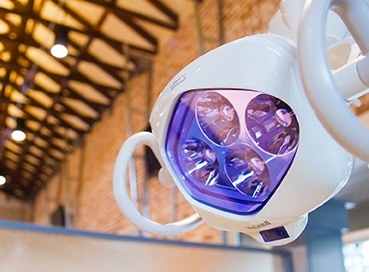Getting My Orthodontics To Work
Getting My Orthodontics To Work
Blog Article
Getting My Orthodontics To Work
Table of ContentsThe Single Strategy To Use For OrthodonticsMore About OrthodonticsNot known Factual Statements About Orthodontics The Only Guide to OrthodonticsThe Ultimate Guide To OrthodonticsHow Orthodontics can Save You Time, Stress, and Money.Excitement About Orthodontics
You may feel some discomfort for a while when your braces are initially put on and when they are changed. It will certainly take a little time to obtain used to your braces and they can bother your lips and cheeks - Orthodontics. If this happens, a relief wax can be put on your dental bracesIt is important to clean your braces as well as the front, back and eating surface areas of the teeth. Your dental professional or orthodontist will provide you pointers on exactly how to brush and on just how to floss making use of floss threaders. After flossing, roll it up in a small sphere and placed it in the rubbish.
Parents must supervise their youngsters to see to it they do an excellent job cleaning their teeth and braces and comply with the advice of their dentist or orthodontist. If you have dental braces, do not bite on difficult things such as ice cubes and nuts. Do not eat completions of pens or pencils.
The Basic Principles Of Orthodontics
Troubles that are not fixed can cause the treatment to last longer. Todays braces are smaller and less noticeable. The traditional steel braces, there are tooth-coloured ceramic braces that are less obvious. Clear aligners are additionally offered for adults. Braces and elastics can additionally be multicoloured. Speak with your dental expert or orthodontist concerning all your choices.
It overviews the instructions of tooth movement and jaw development in somebody that is still growing. There are various kinds of headwear and they might be used during any component of the orthodontic therapy. Your orthodontist or dental practitioner will certainly show you how to place on the headwear and tell you for how long to wear it daily.
Some Known Questions About Orthodontics.
They may require to be put on constantly or component of the moment. Tooth removal might be required if your teeth are crowded or if a tooth is badly out of placement. Jaw surgery (or orthognathic surgical procedure) may be needed when there are significant differences in the dimension or position of the upper and lower jaws.
An orthodontist is a dental professional trained to diagnose, stop, and deal with teeth and jaw irregularities. Orthodontists work with people of all ages, from children to grownups.
The 8-Minute Rule for Orthodontics
All orthodontists are dental professionals, yet not all dental practitioners are orthodontists. Orthodontic residency programs offer intensive, concentrated guideline for oral specialists. They focus on two areas: How to correctly and safely relocate teeth Just how to effectively lead development in the teeth, jaw, and faceOnce an orthodontist has completed training, they have the choice to become board certified.
Not known Facts About Orthodontics
If you have only minor malocclusion, you might be able to make use of clear dental braces, called aligners, rather than typical braces. Some people require a headwear to aid relocate teeth into her response line with pressure from outside the mouth. After dental braces or aligners, you'll need to put on a retainer. A retainer is a custom tool that keeps your teeth in position.
They can develop added area in the mouth without having to draw teeth. If you have a severe underbite or overbite, you could require orthognathic surgical procedure (also called orthodontic surgery) to lengthen or shorten your jaw.
Orthodontics for Beginners

Orthodontists might perform surgical procedure, exams,X-rays,and more to assist you acquire an extra comfy, healthier smile. An orthodontist is focused on your bite, so something like a cracked tooth would certainly be taken care of by a dental practitioner. Orthodontists are dental professionals however not all dental experts are orthodontists. Orthodontists are focused on your bite, or the way your teeth fit together, and the straightness of your teeth.
A stunning smile can be an excellent asset. It makes you really feel positive and aids you create partnerships with your peers. One of the indicators of a lovely smile is a healthy collection of teeth and excellent dental wellness. Nonetheless, the majority of people have gapped, misaligned, irregular teeth that can make them imperfect.
See This Report about Orthodontics
Orthodontic therapy is understood for its ability to change smiles, yet its advantages extend past simple looks. Some of these click for info benefits are: One of the significant orthodontic appliances is that it starts a transformative procedure beyond tooth alignment.
These modifications are crucial for preserving progression and guaranteeing the treatment remains on track according to the recognized plan. The orthodontist creates a tailored procedure strategy based upon the diagnostic records and the person's unique demands and preferences. This plan lays out the advised action to address the identified orthodontic problems and achieve the desired outcome.
Report this page